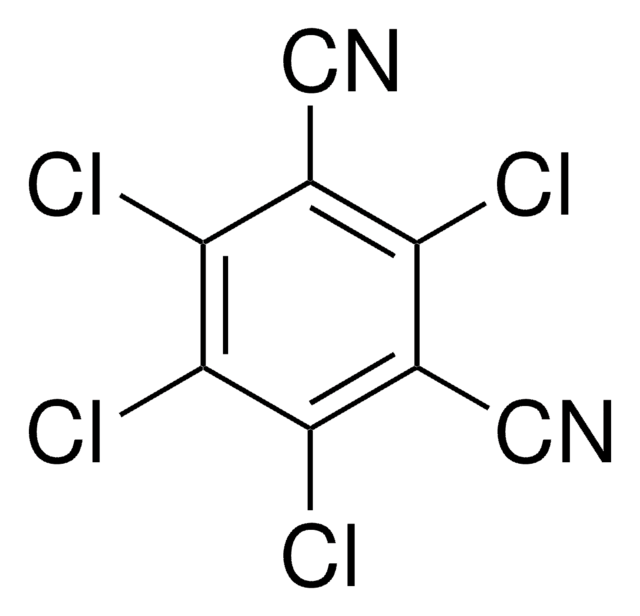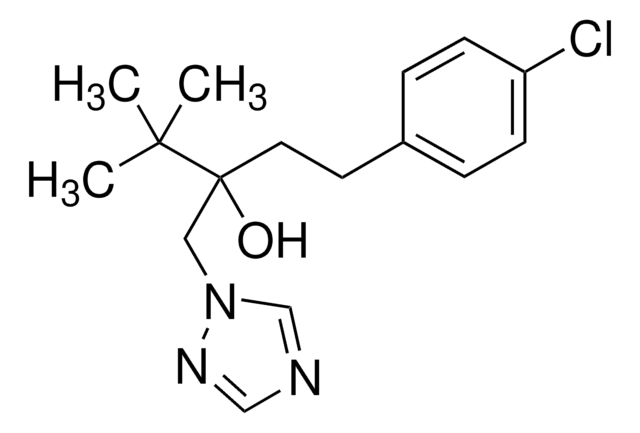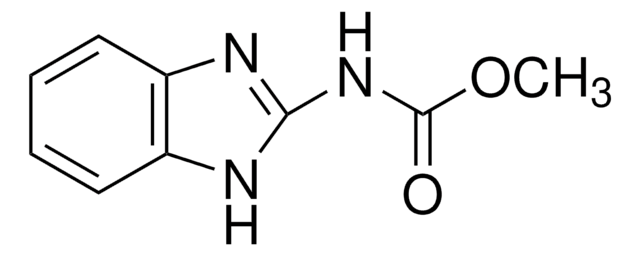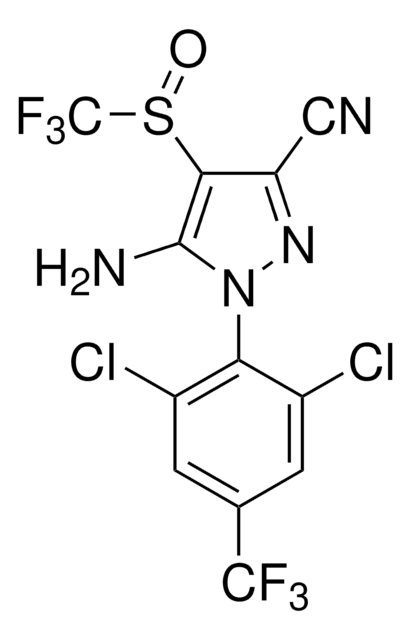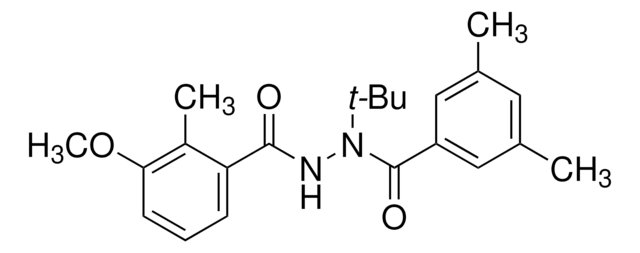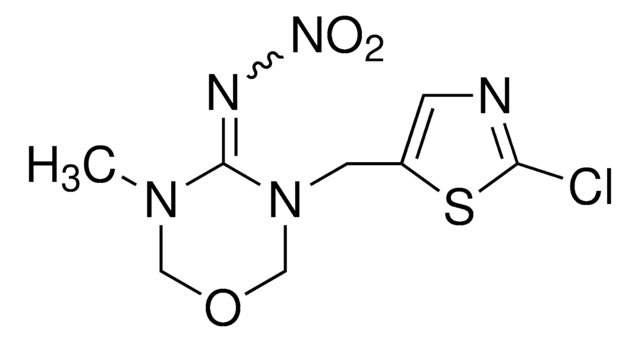N11454
Chlorothalonil
analytical standard
Sinônimo(s):
Tetrachloroisophthalodinitrile
About This Item
Produtos recomendados
grau
analytical standard
embalagem
ampule of 250 mg
fabricante/nome comercial
Chem Service, Inc. PS-1020
técnica(s)
HPLC: suitable
gas chromatography (GC): suitable
aplicação(ões)
cleaning products
cosmetics
food and beverages
personal care
formato
neat
cadeia de caracteres SMILES
Clc1c(Cl)c(C#N)c(Cl)c(C#N)c1Cl
InChI
1S/C8Cl4N2/c9-5-3(1-13)6(10)8(12)7(11)4(5)2-14
chave InChI
CRQQGFGUEAVUIL-UHFFFAOYSA-N
Procurando produtos similares? Visita Guia de comparação de produtos
Aplicação
Palavra indicadora
Danger
Frases de perigo
Declarações de precaução
Classificações de perigo
Acute Tox. 2 Inhalation - Aquatic Acute 1 - Aquatic Chronic 1 - Carc. 2 - Eye Dam. 1 - Skin Sens. 1 - STOT SE 3
Órgãos-alvo
Respiratory system
Código de classe de armazenamento
6.1A - Combustible acute toxic Cat. 1 and 2 / very toxic hazardous materials
Classe de risco de água (WGK)
WGK 3
Ponto de fulgor (°F)
Not applicable
Ponto de fulgor (°C)
Not applicable
Escolha uma das versões mais recentes:
Certificados de análise (COA)
Lamentamos, não temos COA para este produto disponíveis online no momento.
Se precisar de ajuda, entre em contato Atendimento ao cliente
Já possui este produto?
Encontre a documentação dos produtos que você adquiriu recentemente na biblioteca de documentos.
Artigos
GC Analysis of Agricultural Pesticides (Standard) on SLB®-5ms
Nossa equipe de cientistas tem experiência em todas as áreas de pesquisa, incluindo Life Sciences, ciência de materiais, síntese química, cromatografia, química analítica e muitas outras.
Entre em contato com a assistência técnica